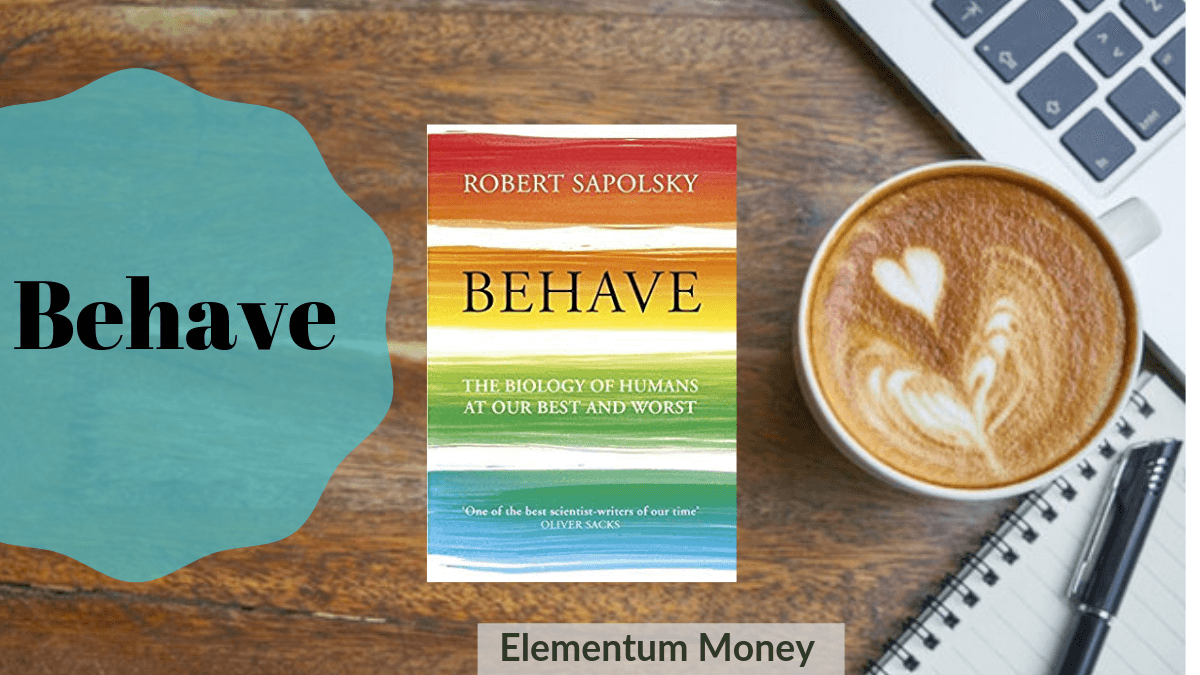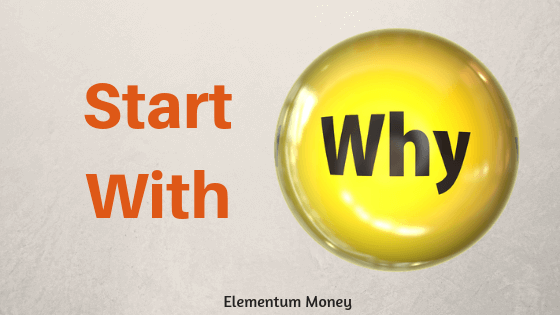There was a time, a short time when I had forgotten the joy I derive from reading and did not really have too many avenues to stumble upon good books either. Today, in some ways, it’s like wherever I look, I find an opportunity to build up my anti-library or the list of unread books which I hope to read. So, while I have a large stack of e-books, I am also a member of a fairly well-stocked library and then I end up going to this area in Mumbai commonly called Fountain. There you find booksellers with probably a better knowledge about books than the most arduous readers and with good recommendations thanks to word on the street (literally). With the good fortune of working close to the area, one afternoon I sauntered up to this one guy who recommended a book called Behave by Robert Sapolsky. I whipped out my phone for my usual practice of checking out the Goodreads rating and found it to be impressive at 4.4, urging me to give it a shot.
What is Behave all about?
The book’s size is pretty much a warning that it is meant only for the most determined reader. While I have always run away from Biology having read the subject only for the two compulsory years in grades 9 and 10, somehow the sub-title of this book – “The biology of Humans at our best and worst” had me hooked. As the author describes in the introduction – “the book explores the biology of violence, aggression and competition – the behaviors and the impulses behind them, the acts of individuals, groups and states and when these are bad or good things”
The starting of the book should have given me an idea that it would be an arduous read but it would also take me on a journey well worth the effort. The author Robert Sapolsky is quite something, a rock star of sorts in his field of neurobiology. As his page on Wikipedia puts it – “He is currently a professor of biology, and professor of neurology and neurological sciences and, by courtesy, neurosurgery, at Stanford University”.
While his achievements are impressive, what really got me was his dry wit, sarcasm and humour injected into a book covering dense, serious material (sense of humor remains my Achilles heel). His language is fun and really doesn’t seem like it’s coming from the pen or the keyboard of a 60+ years old man. You gotta believe me when you read the name of the chapter where he discusses teenagers – Adolescence; or, dude, where’s my frontal cortex (it’s a nerdy joke that I hope you will understand by the end of the post).
I cannot claim to have understood the book in full. However, I do know that whatever bits my non-scientifically inclined brain was able to absorb have left it much more enriched.
One of my friends has now often poked and probed me, asking me why I write book reviews and how does it help people wanting to improve their relationship with money, considering that’s the main motive behind Elementum Money. Since I vouch for the validity of her point, in this case, when I talk about the 5 concepts that have stayed with me, I will try and link it to how it relates to our thoughts, actions and behaviors about money.
My 5 Big Takeaways from the book
This is one book which has in some ways changed the way my inner voice has started talking to me. At random moments, I will tell myself that my amygdala is getting activated or that I need to stop letting my mesolimbic system control me or that I am viewing the situation as an Us vs Them which I need to discard and view it in a broader manner. I am getting ahead of myself but this was just to give an idea of how this book has made a profound and so far lasting impact on me.
Mesolimibic system and dopamine rush
We have all had those moments where we have an evil demon inside our head, rubbing its palms together prodding us towards something that feels oh so good at that moment, but pretty much a problematic trend in the long run. Well, the good bit is it’s not imaginary and there is actually science behind that process.
The dopamine rush is essentially the release of that hormone when we do something pleasing. In fact, dopamine rush is closely linked to the temptation of instant gratification. However, there were two very interesting insights that I got from the book.
One, dopamine is more about the pursuit of happiness (till the time it is not an impossible dream that is only bound to be squashed), rather than the act itself. For instance, dreaming and planning for a holiday over months is as if not more enjoyable than the holiday itself which comes with its fair share of real pains of jet lag and exhaustion. Similarly, even in the process of financial planning, pursuing some goal might end up giving you the dopamine rush even more than the pinnacle of finally achieving it.
Another very important insight, backed by science was the fact that the dopamine rush gets reduced with repetition, and as we get habituated to something it is no longer that joyful. However, the absence of it can cause significant depletion of dopaminergic response. Such a powerful reason to limit the extent of lifestyle inflation, right? When you splurge on a luxury branded apparel as a treat to yourself, it might end up being a source of joy. The minute the entire wardrobe becomes all about luxury brands and perfect clothes, it barely even registers. However, for some reason, if you cannot have it now, you are bound to be miserable because the brain is a creature of habit.
Sapolsky puts this idea so well with a simple sentence:
What was an unexpected pleasure yesterday is what we feel entitled to today, and what won’t be enough tomorrow.
-Behave, Robert Sapolsky
Frontal Cortex
This is one of the last to evolve parts of the brain and responsible for so so many things that we do. Since I can barely do justice to the amazing world Sapolsky opened to me through his book, I will use a few lines to make the role of the frontal cortex pretty clear:
Adult life is filled with consequential forks in the road where the right thing is definitely harder. Navigating these successfully is the portfolio of the frontal cortex, and developing the ability to do this right in each context requires profound shaping by experience.
-Behave, Robert Sapolsky
Essentially, we are often faced with decisions where it’s easier to succumb to temptation. For instance, I am trying hard to tone up for an upcoming family wedding. Suddenly, yesterday afternoon, my mesolimbic system kicked in with a strong craving for chocolate. I was almost out of the gate to a nearby shop to avail of a dopamine rush that I so deserved. But then, my frontal cortex stepped into action and took me to the path of not regretting acting on that impulse.
Yes, this is how I have started viewing my thoughts and actions after reading this book. Your brain starts seeming like a different place in itself and you feel like a third person watching a movie unfold. The same holds true for simple yet profound decisions like whether to increase your investments after a pay raise or spend it all. You know exactly which decision your mesolimbic system will push you towards and the one your frontal cortex will be rooting for.
Neuroplasticity
Do people change? Do their brain shapes shift? What about the way they think?
Looks like science can give us evidence for the brain to change in any shape or form when given the right context. However, the changes are reversible too.
To me, this fact made a lot of sense in our financial lives too. So many of us have one bad experience and then vow never to touch a particular asset. For instance, if someone had invested in equities at the peak of market levels in 2007, it is highly probable that after the pain of the next few months, they vowed never to go even close to the E-word. But, as science shows, in the right context, maybe the right professional to guide in tough times, it is entirely possible that this mindset is reversed and the person actually becomes an ardent fan of equities.
However, as Sapolsky warns, neuroplasticity comes with its own limitations. Many deep-seated fears and attitudes, could actually be immune to change or evolution.
The urge to conform
We have all heard about how herd mentality is a vital aspect seen in financial markets. Clearly, it follows from the scientifically proven human urge to conform. Like a lot of other animals, the need to fit in is biologically wired in us, even if it leads us to foolish decisions.
The author describes umpteen instances of experiments that show actions we take to fit in, even in situations specified as psychological experiments. One can only imagine, in real life with consequences, it is bound to be much stronger. For instance, most respondents change their answer to a knowingly wrong one if they are told everybody in the group has chosen it.
When I read about this strong need to conform, I could think of so many instances in our lives. But to take just one, in some ways I think those LIC policies that we have all seen as children, really had a field day thanks to this human trait. We all had to have one because our aunts, uncles and neighbors all had a LIC policy. Start questioning your money choices to see whether you are doing it to fit in your personal finance plan or is it simply because everyone is doing so.
Context matters
While discussing two of the hormones, testosterone and oxytocin, Sapolsky mentions that their effect is pretty much in context. For instance, while testosterone is often given causal linkage to aggression, research shows that it increases aggression only in individuals already prone to it.
Why is this important? We often assume that money makes people evil. In my mind, money is also as contextual. For people who are anyway mean and narrow-spirited, money gives them an avenue to be even more so. On the other hand, when warm and generous people come into money, it is these traits that show up stronger.
This is one of the skimpiest book posts I have ever written and it barely scratches the surface of the brilliance emanating from the book. If you have even a little curiosity about the fascinating human brain and some patience to go over technical details, give this book a try. Robert Sapolsky sure does whatever he can to make it interesting and memorable.
Have you ever read any book about the brain? What do you remember of it? Let me know in the comments below.





Leave a Reply